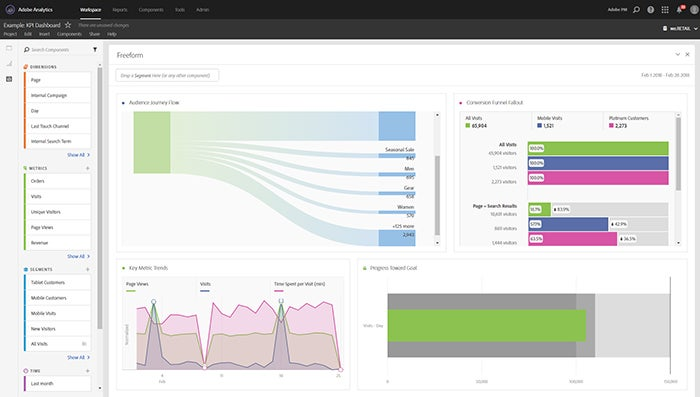Have you ever received a completely irrelevant communication from a business that you have some — or a lot — of history with? Maybe an email offering you a discount on something you just paid full price for? Maybe coupons for something you’d never purchase?
In today’s digital economy, businesses using omnichannel analytics are more likely to outsmart their competitors and please their customers. Your job is to make sense of the loads of information. Which data sets are crucial? Which ones provide little to no value? Where is the actionable signal amidst all the noise? How do we find and use insights before they expire? Make no mistake, insight definitely has a shelf life, and long queries and queues to answer questions and act on data is a surefire way to lose business.
Last month, we announced customer journey analytics in Adobe Analytics, empowering organizations to be more inventive in the way they centralize, normalize, and interact with different layers of data. With this new capability, organizations can easily centralize and standardize omnichannel data. This means you can have a single store of data based on a common schema that will save you countless hours of data preparation.
But more importantly, normalizing your CX data will create a seamless process for describing your customers’ interactions consistently across various touchpoints, letting you more easily deliver experiences that meet expectations regardless of channel. For example, a retailer that can combine point-of-sale data into a customer profile will know to send you an offer for 25% off an accessory and not the item you just paid full price for.
We’re also making it easier for you to curate and explore your customer data in ways that provide some interesting benefits. Candidly, visualization needs more customer intelligence, like journey-based analysis tools and attribution functionality. And critically, it needs to provide interactivity — meaning the ability to immediately access and interrogate data.
Interactivity matters in reporting and visualization because business users typically don’t know the questions ahead of time, and they’re typically not writing their own SQL. They also have follow-up questions that they want answered now. Customer journey analytics brings the interactive, self-serve experience of Analysis Workspace to omnichannel data analysis.
A Gartner survey found that nearly half of IT and business leaders who invest in customer analytics see customer journey analysis as their top priority. And for good reason, according to Harvard Business Review, as delivering seamless and personalized experiences across the customer journey has the potential not only to increase customer satisfaction by 20%, but also lift revenue by up to 15% while lowering costs by as much as 20%. This is a win-win for customers and brands.


